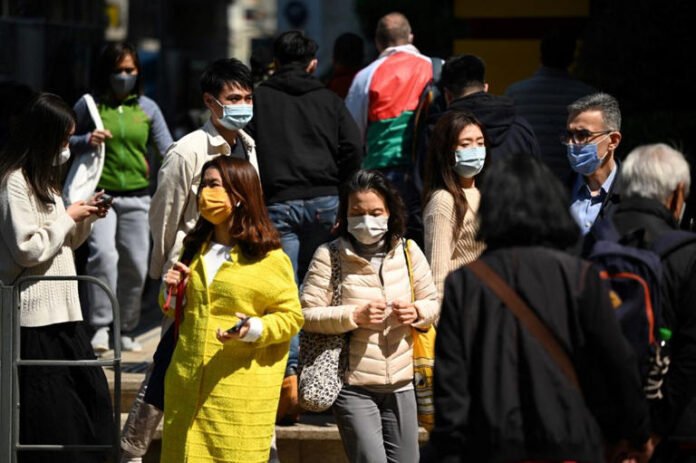New Delhi – Amid growing concerns over rising cases of Human Metapneumovirus (HMPV) and other respiratory illnesses in China, the Indian Health Ministry has reassured citizens that there is no “unusual surge” in similar cases within India. Addressing media queries on January 5, ministry officials emphasized that the country’s health surveillance systems remain robust and fully equipped to monitor and respond to any potential outbreak.
The Situation in China
Reports from China indicate a significant uptick in respiratory infections caused by HMPV, a virus known to cause flu-like symptoms such as cough, fever, nasal congestion, and shortness of breath. The virus primarily affects children, older adults, and individuals with compromised immune systems, raising public health concerns in the region. Hospitals in several Chinese cities are reportedly dealing with a surge in cases, putting additional pressure on healthcare infrastructure already strained by seasonal flu and other respiratory ailments.
The developments in China have sparked anxiety globally, given the interconnected nature of public health in today’s world. Observers have drawn parallels to the initial spread of COVID-19, urging governments to maintain vigilance.
India’s Health Ministry Statement
In a detailed press briefing, the Indian Health Ministry clarified that current data does not indicate a similar rise in respiratory illnesses within the country. Dr. Rajesh Bhushan, the Union Health Secretary, stated, “Our surveillance mechanisms have not detected any unusual increase in cases of HMPV or other respiratory infections. Seasonal fluctuations in respiratory illnesses are being observed, as expected during this time of year.”
The Ministry highlighted the following key points:
- Surveillance Systems: India’s Integrated Disease Surveillance Programme (IDSP) monitors trends in infectious diseases across the country. Reports from state and district levels have not shown any alarming patterns.
- Diagnostic Capacity: Laboratories under the Indian Council of Medical Research (ICMR) are equipped to test for HMPV and other respiratory viruses. “We have the capability to identify and address emerging health threats promptly,” added Dr. Bhushan.
- Public Awareness: Citizens are advised to continue following standard health precautions, including hand hygiene, wearing masks in crowded places, and seeking timely medical attention for flu-like symptoms.
Understanding HMPV
Human Metapneumovirus, first identified in 2001, is a common respiratory virus that spreads through close contact, respiratory droplets, and contaminated surfaces. While most cases are mild and self-limiting, severe infections can occur in vulnerable populations.
HMPV is often overshadowed by other respiratory pathogens like Influenza and Respiratory Syncytial Virus (RSV). However, it is increasingly recognized as a significant contributor to respiratory illnesses, particularly in pediatric and geriatric populations.
India’s Preparedness
India’s healthcare system has faced significant challenges in recent years, particularly during the COVID-19 pandemic. These experiences have bolstered the country’s preparedness to tackle future public health emergencies. Key measures include:
- Enhanced Laboratory Network: The expansion of testing facilities across the country ensures timely detection of emerging pathogens.
- Vaccination Drives: While no specific vaccine exists for HMPV, India’s robust immunization programs for influenza and other respiratory illnesses provide a layer of protection.
- Public Health Campaigns: Awareness campaigns educate the public on preventive measures, reducing the burden of infectious diseases.
Global Context and Lessons Learned
Public health experts stress the importance of international cooperation in managing infectious disease outbreaks. Dr. Soumya Swaminathan, former Chief Scientist at the World Health Organization (WHO), noted, “The rise in respiratory illnesses in any part of the world serves as a reminder of the interconnected nature of health. Countries must share data and best practices to ensure global preparedness.”
India’s proactive measures reflect lessons learned from the COVID-19 pandemic. Enhanced surveillance, rapid diagnostic capabilities, and effective communication with the public are critical components of the country’s strategy.
Conclusion
While the rise in respiratory illnesses in China warrants attention, the Indian Health Ministry’s assurance of no unusual surge in similar cases provides a sense of relief. Citizens are urged to remain vigilant but avoid panic, trusting in the country’s strengthened public health framework. As global health systems remain on high alert, India’s focus on preparedness and prevention underscores its commitment to safeguarding public health.

